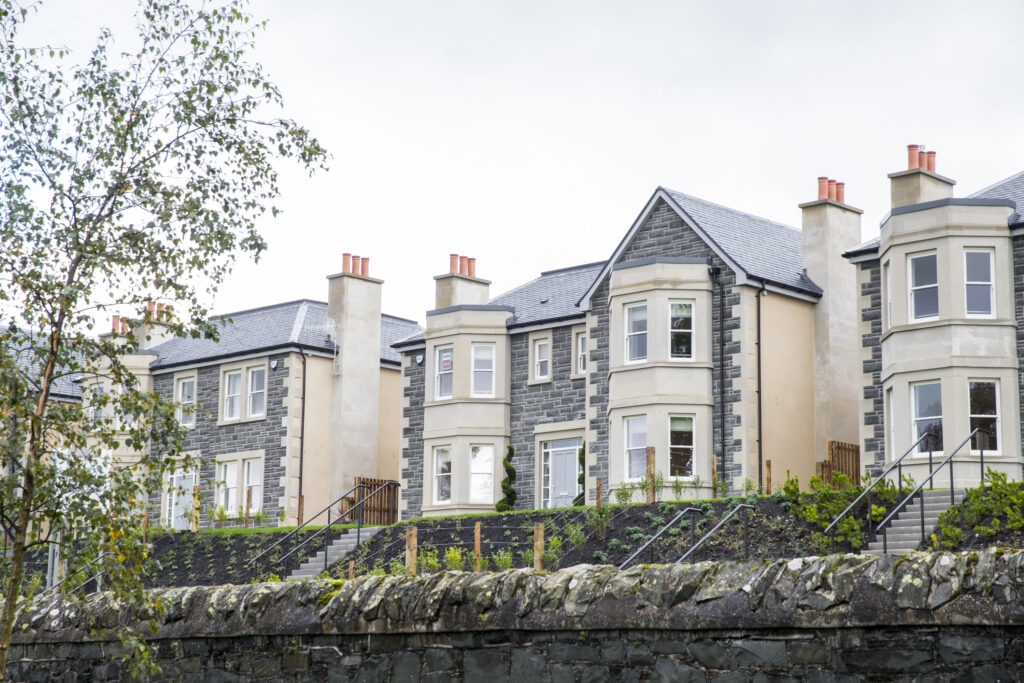In this latest article in our Insight series of in-depth analyses of all-things property, Queensberry Properties’ sales and marketing director, Hazel Davies, examines how Victorian influences continue to shape today’s Scottish architecture.
“Every architectural era has its proponents and adherents, from Georgian minimalism to Brutalist obduracy. Yet no architectural style has influenced Scotland as much as the Victorian era, when many of our country’s most iconic buildings were constructed.
“It’s been over 120 years since the reign of Queen Victoria ended, and the Edwardian era ushered in a less intricate, more asymmetrical form of residential architecture. Yet the Victorian legacy lives on – not just in the grid-pattern streets of Glasgow and Helensburgh, but in the design of modern buildings. At Queensberry Properties, we embrace the latest architectural trends, yet these thoroughly contemporary designs still owe a clear debt to the work of 19th century trailblazers like John Baird, James Salmon and Alexander ‘Greek’ Thomson”.
Second city of the Empire
“While Victorian architecture can be found throughout Scotland (and indeed Britain and the wider Commonwealth), its glory years dovetailed with Glasgow’s meteoric growth. Queen Victoria lent her name to roads, parks, churches, bridges, public baths and even grain mills in Scotland’s largest city. The west end and south side are synonymous with Victorian architecture, from Langside’s mansion houses and curving crescents to the intricately detailed tenements of Hillhead and Dowanhill.
“The enduring Victorian influence on modern architecture is perhaps best encapsulated along Park Quadrant in the west end, where Charles Wilson’s incomplete 1855 masterplan was recently completed by 11 new buildings all named after famous architects including William Leiper and Archibald Leitch. Like their historic neighbours, these blonde sandstone tenements feature five-storey façades with full-height bay windows, set beyond compact front yards bordered by black wrought iron fencing”.
It’s what’s inside that counts
“The best representation of Victorian architecture is often found inside public rooms. High ceilings decorated with ornate cornicing and ceiling roses extend into full-height bay windows, whose large casements accentuate natural brightness in response to the occasionally gloomy interiors of their flat-fronted Georgian predecessors.
“The contrasting stonework and bay windows associated with Victorian villas were central to the design of our recent Hydro Gardens development in Peebles. Adoption of period details allowed two terraces of new-build houses to blend in seamlessly with their C-listed 1890s neighbours along Innerleithen Road. By this late-Victorian stage, ornate decorations were falling out of favour among some architects, preceding the more minimalist (though equally well proportioned) Edwardian homes that would be built until the outbreak of the Great War”.
Pane and pleasure
“Windows have evolved immensely since the days when crown glass was made by hand-spinning glass into a disc, and sheet glass was formed by flattening molten glass cylinders into thick panes. It was the Victorians who developed plate glass, which had the benefits of being thinner and more consistent with less bevelling. As a result, the six-over-six sash windows which are so common throughout Edinburgh gave way to larger pane sizes in two-segment window casements – a phenomenon still employed today by builders.
“Visit any Queensberry Properties’ development, and you can expect to see single panes of glass stretching from the floor towards the ceiling. As well as maximising natural daylight, this enables us to provide external access onto balconies and terraces – another concept the Victorians popularised. Providing an outlet for their love of wrought ironwork (as mentioned above), walk-out balconies and roof terraces flourished throughout the Victorian era. They remain popular with new-build residents today, creating outside space and extending living quarters”.
New appreciation for old designs
“A great deal of Scotland’s Victorian architectural heritage has been lost through a combination of neglect, comprehensive redevelopment and mysterious fires. Yet modern construction and design still owes a debt to Victorian architects, adopting modern takes on their double-height public rooms, period fireplaces and multi-layer cornicing. There are also increasing efforts to retain historic buildings alongside sympathetically designed modern counterparts. All told, we’ve come a long way from the 1930s, when P.G. Wodehouse claimed few Victorians “were to be trusted within reach of a trowel and a pile of bricks.”

